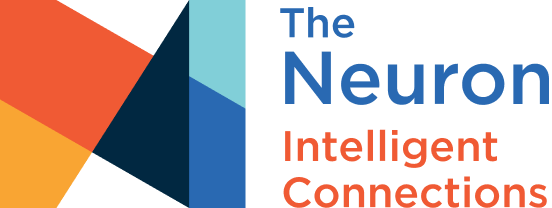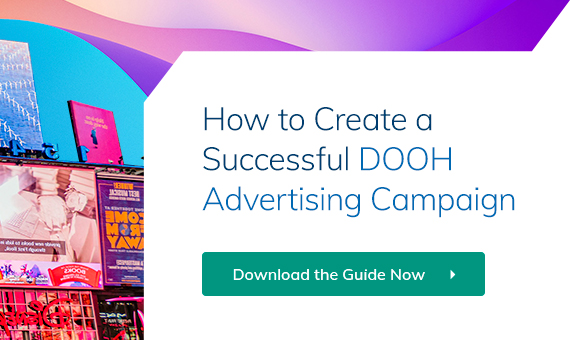If you want to step your marketing up a gear in 2021, digital out of home (DOOH) advertising could be exactly what you’re looking for.
DOOH displays are highly visible, engaging and effective methods of increasing revenue. Far from the role of traditional OOH, which was mostly considered a brand awareness tool, DOOH can now be optimized to provide highly targeted advertising that you can track directly onto sales.
Marketing departments are fast waking up to the potential this offers.
Below, we explore what the digital OOH market – set for significant growth over the next decade – could offer you.
The Digital Out of Home Advertising Market: Key Digital Out of Home Advertising Statistics
The digital OOH market is set to grow significantly over the next few years. This is because:
- Digital inventory is increasing. Digital billboards and digital screens are an increasingly common sight across town and city centers, bus stops, train stations and other public places.
- Consumers are increasingly ambivalent towards intrusive online ads and often skip past them or use an ad blocker.
- Digital OOH media buying processes are increasingly automated, which makes it easier for a range of buyers to leverage DOOH ads in their marketing campaigns.
This last point is important. Programmatic DOOH (pDOOH) allows buyers to bid on inventory automatically (similar to the way in which you bid on online advertising), whilst specifying conditions under which ads are displayed.
Don’t just take our word for it though. Let the figures speak for themselves:
Key DOOH Statistics for 2021
- The DOOH market was valued at $41.06bn in 2020 and is set to grow significantly to $50.42bn by 2026 (Research and Markets)
- The number of digital out of home billboards has increased every year since 2016, with the number standing at 9,600 in 2020 – a 43.3% increase in just four years (eMarketer)

(Image source: emarketer.com)
- As a result of spending more time on outdoor pursuits, consumers are noticing OOH ads 45% more than pre-pandemic levels (The Harris Poll)
- Despite the COVID-19 pandemic forcing people to spend more time indoors, DOOH media spending grew over 2020. Whilst growth remained slow over 2020 at 1.6%, significant growth of 19.2% is expected in 2021, with steady increases over 2022 and 2023 (eMarketer)
- pDOOH represents an increasing proportion of overall DOOH spend and is expected to increase from just 3.2% in 2019 to a significant 14.8% in 2022 (eMarketer)
What’s driving this increase in numbers? It has a lot to do with both DOOH’s ability to cut through the noise and the targeting potential pDOOH offers.
DOOH is a Cost-Effective Mass Marketing Tool
Eye-catching, dynamic content on publicly visible digital signage offers unparalleled opportunity for brand visibility.
Outdoor advertising in city centers, for example, has the potential to be seen by thousands of people over a single day. Whilst your initial outlays might be higher for OOH media, it tends to be very cost effective from a CPM perspective.
Not only is DOOH cost effective; it also targets consumers whilst they’re most open to taking in your brand messaging.
Increasingly, people find online ads irritating and intrusive. This is because they are usually trying to do something else whilst you are advertising to them – interacting with friends on social media for example. With increasing use of ad blockers and increased levels of digital burnout as a result of COVID-19, there’s a significant chance your message isn’t getting through.
DOOH media, on the other hand, targets people when they aren’t doing anything else. Whether waiting for a Greyhound, moving between stores or driving on the highway, people’s minds are more receptive when they view DOOH ads. This increases the chance your messaging will cut through, resulting in higher probability of a sale as a result of the ad.
Programmatic DOOH Offers Highly Targeted, Data-Driven Marketing
Modern marketing teams are increasingly data obsessed. Previously, this has been an issue when planning DOOH campaigns because, whilst effective mass awareness tools, it has been difficult to get a concrete idea of their success.
Programmatic DOOH transforms traditional DOOH from a one-to-many medium to a powerful marketing tool that can be targeted, monitored and optimized by:
- Automating OOH media buying to remove laborious, third-party heavy processes
- Allowing media buyers to specify the conditions under which their ad will be displayed
- Offering a range of analytics options so that marketers can gauge campaign efficiency
For example, as well as location-based buying, pDOOH, allows buyers to specify that they only want their ads displayed on particular dates, times or weather conditions. This allows you to target specific audiences with your ad, increasing chances of a sale significantly.
From here, you can monitor, analyze and optimize your ads for success. Using a pDOOH platform, you can react in real-time to:
- Initial responses to your ad (for example, whether people smiled when they saw it)
- Ad visibility, via GPS data gathered from smartphones
- Demographic data, for example levels of engagement across genders or age groups
- Success of interactive elements, for example QR code scans
It’s important to understand that these metrics may be available for traditional DOOH buyers too, but that traditional reporting methods don’t allow for real-time data. Programmatic DOOH transforms your ability to win more business by allowing you to react to key metrics and optimize your campaign in real time.
It All Starts with The Right Platform
To really activate the benefits of programmatic DOOH, you’ll need an easy-to-use, transparent platform which offers campaign data in real time.
The Neuron’s programmatic DOOH buying platform connects you directly to sellers who have the inventory you need, offers advanced analytics capabilities and lets you launch campaigns at the push of a button.
We’d love to talk about your pDOOH needs – get in touch to see how we can help.

